As the most unique Vietnamese town, Hoi An is definitely worth visiting. Here, visitors have many things to do and experiences for their holiday time. Everyone knows that it has an old town featuring houses of yellow walls, colorful lanterns, tailor shops and such diverse street foods. The beach – sandy expanses, clear water, island view and the countryside – peaceful villages, rice fields, traditional handicrafts are not really far away from this world heritage town. Travelers even can cycle to them. For adventure seekers, majestic mountains, surprising caves and off-shore islands absolutely are cool places to go. They also love watching the sunrise and sunset.
Hoi An has evolved since 15th century as a melting pot, its culture is distinctive and well-blended between different nationalities. That is a great interest for those who are willing to explore cultural experiences in a strange city. Tasting or preparing foods, learning traditional crafts, joining daily works with farmers or fishermans, riding across countryside and others, allow travelers to have a deeper knowledge. All are hands-on, requiring an interaction with local people.
Thus, experiences in Hoi An are what travelers today would like to do.
Read also:
- The Best Things to Do in Hoi An
- Cheap Things to Do in Hoi An
- Unique Things to Do in Hoi An
- Romantic Things to Do in Hoi An
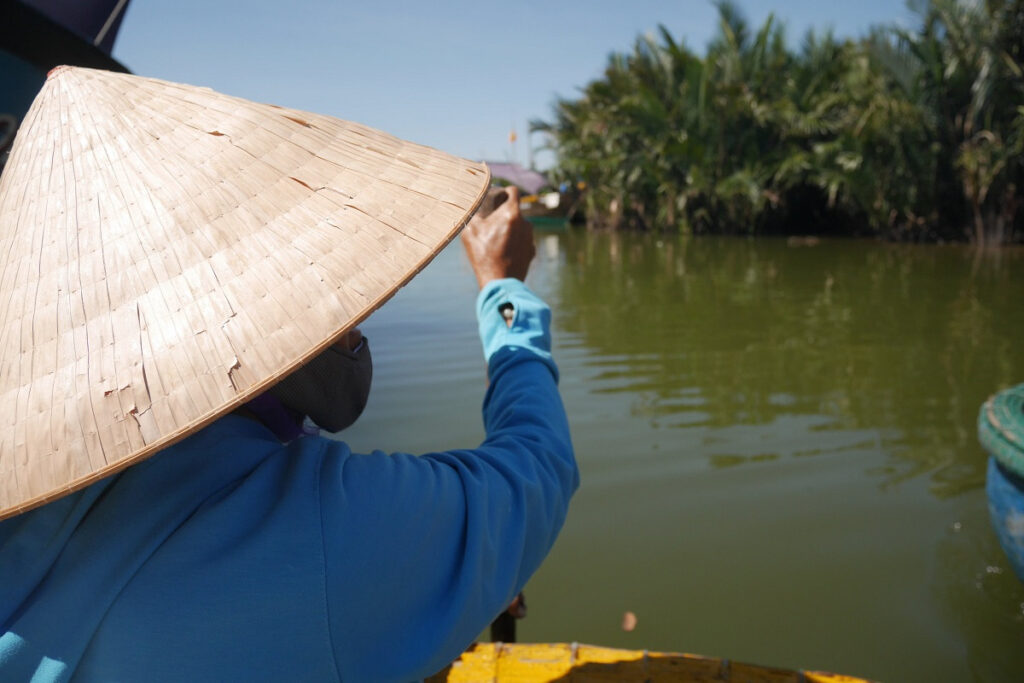
Table of content
- 1 Be a Farmer in Tra Que Vegetable Village
- 2 Ride a Bicycle Through Cam Kim Island
- 3 Make Pottery by Potter’s Wheel
- 4 Lantern Festival in the Full Moon
- 5 Make a Lantern at Your Hands
- 6 Hoi An Cooking Class: Preparing Local Foods
- 7 Explore Hoi An’s Coconut Forest by Basket Boat
- 8 Taste Hoi An’s Street Foods with Local Foodie
- 9 Water Buffalo Ride in Rice Fields
- 10 See Sunrise or Sunset in My Son Sanctuary
- 11 Hike the Marble Mountains: Caves, Peaks and Temples
- 12 Cruise Hoai River by Boat and Release Paper Lanterns
- 13 Visit Hoi An’s Fish Markets in Sunrise
- 14 Stay Overnight on the Cham Island
- 15 Discover Underwater World of Cham Islands
- 16 Related Posts
- 17 Bach Ma National Park: Hiking, Trekking in Da Nang and Hoi An
- 18 Hoi An Wet Season: What to Do in Hoi An When It Rains?
- 19 Thanh Ha Terracotta Park
- 20 Vinwonders Nam Hoi An Theme Park (formerly Vinpearl Nam Hoi An)
- 21 Am Phu Cave Complete Travel Guide
- 22 Hoi An or Hue: Which is Better?
- 23 The Official Hoi An Travel Guide (MUST READ)
- 24 The Hoi An Market (Hoi An Central Market) Complete Guide
- 25 Hoi An Memories Show: The Best of Hoi An Impression Theme Park
- 26 Hoi An Bridge: Famous Bridges in Hoi An
- 27 How to Get From Hoi An to My Son Sanctuary
- 28 Hoi An’s Chinese Assembly Halls and Chinese Temples
- 29 Hoi An Walking Tours: Heritage, Foods, Photography & Locals
- 30 Hoi An Self Guided Walking Tour (Hoi An By Yourself)
- 31 How to Visit Golden Bridge Vietnam
- 32 Unique Experiences in Hoi An and Why?
- 33 An Bang Beach: A Guide to Hoi An’s Best Beach
- 34 Experiences in Hoi An: Get Insight Into Hoi An’s Local Culture
- 35 Things to Do in Ba Na Hills Besides Golden Bridge
- 36 Hoi An Nightlife: What to Do in Hoi An At Night?
- 37 Hoi An Countryside: Villages, Rice Fields & Tours
- 38 How to Get to Golden Bridge From Hoi An
- 39 Hoi An Entrance Fee: Old Town, Golden Bridge, My Son, More
- 40 Hoi An Airport: Everything You Need to Know
- 41 Hoi An Lantern Boat Ride on Hoai River
- 42 Hoi An Private Car and Driver
- 43 What to Do in Hoi An Ancient Town
- 44 Da Nang and Hoi An Itinerary for Visitors Staying Overnight in Hoi An
- 45 Hoi An 3 Day Itinerary: A Travel Plan for 3 Days in Hoi An
- 46 Hoi An Free Things to Do: Budget Travel in Hoi An Vietnam
- 47 Hoi An One Day Itinerary: A Travel Plan for One Day in Hoi An
- 48 Hoi An Half-Day Tours: Guide to Half Day Trips From Hoi An
- 49 Hoi An Day Tours: A Guide to Best Day Trips From Hoi An
- 50 Hoi An Beach: A Guide to All Beaches in Hoi An Vietnam
- 51 Hoi An Food Specialties
- 52 How to Get From Hoi An to Da Nang
- 53 Hoi An Cheap Things to Do: All Solo Travelers Need to Know
- 54 Hoi An Best Things To Do: Recommendations from Local Experts
- 55 Hoi An Things to Do: All What Can You Do in Hoi An Vietnam
- 56 Hoi An Things Not to Miss: A Guide to Must Do in Hoi An
- 57 Hoi An or Da Nang: Which is Better?
- 58 Hoi An Pottery Village: A Guide to Thanh Ha Pottery Village
- 59 Hoi An Ancient Town Tour
- 60 Hoi An Old Town Ticket: Price, Sellers, Included Sites, More
- 61 My Son Sanctuary Tour
- 62 Hoi An Lanterns: Festival, Making Class, Where to Buy, More
- 63 Hoi An Best Area to Stay: Guide to Where to Stay in Hoi An
- 64 Hoi An Weather by Month: Guide to Hoi An Monthly Weather
- 65 Hoi An River Cruise: Guide to The Best Boat Tour in Hoi An
- 66 Hoi An Old Town Boats: Guide to Boat Rides in Hoi An Town
- 67 Hoi An 2 Day Itinerary: Traveler Guide to 2 Days in Hoi An
- 68 Cham Island Hoi An
- 69 Hoi An Basket Boat Ride
- 70 Hoi An Coconut Village: A Guide to Cam Thanh Coconut Village
- 71 Hoi An Cham Temples: My Son Sanctuary & Quang Nam Temples
- 72 How to Get from Da Nang Airport to Hoi An
- 73 Da Nang to Hoi An: Best Da Nang Airport Transfer and More
- 74 Hoi An Tour Guide: How to Find a Private Tour Guide in Hoi An
- 75 Hoi An Ancient Town Attractions
- 76 Hoi An Old Town Map
- 77 Tra Que Vegetable Village
- 78 Hoi An Lantern Festival
- 79 Hoi An Night Market: A Thing to Do in Hoi An at Night
- 80 My Son Sanctuary Travel Guide
- 81 Hoi An Old Town Unesco World Heritage – Hoi An Travel Guide
- 82 Featured Tours and Experiences
- 82.0.1 Golden Bridge and Ba Na Hills Night Tour
- 82.0.2 Golden Hands Bridge Tour In Sunrise or Sunset (1/2 Day)
- 82.0.3 Cam Kim Island Bicycle Tour From Hoi An
- 82.0.4 Cham Island Tour From Hoi An (Group Tour)
- 82.0.5 Cham Island Tour From Da Nang (Group Tour)
- 82.0.6 Hoi An Vegetarian Food Tour
- 82.0.7 Hoi An Evening Walking Food Tour Through Laneways
- 82.0.8 Private Hoi An Basket Boat Tour (Shuttle Bus, Bicycle, Bike)
- 82.0.9 Half-day Am Phu Cave Tour (Private)
- 82.0.10 Hoi An Countryside Tour (Bicycle, Car, Electric Shuttle)
- 82.0.11 Da Nang Tour Package From Singapore
- 82.0.12 Hoi An Evening Tour From Da Nang with Lantern Boat Ride
- 82.0.13 Hoi An Walking Food Tour Through Laneways
- 82.0.14 My Son Sanctuary and Hoi An Old Town Tour with Thu Bon River Cruise
- 82.0.15 My Son Day Trip From Hoi An including Marble Mountains and Basket Boat
- 82.0.16 Half Day Hoi An City Tour With River Cruise
- 82.0.17 Son Tra Peninsula Tour with Marble Mountains (Private/Small Group)
- 82.0.18 Hue Day Trip From Hoi An with Hai Van Pass, River Cruise & Lunch
- 82.0.19 Hoi An Ancient Town and Countryside Tour (Bests of Hoi An Tour)
- 82.0.20 Hoi An Tour From Da Nang Airport (Private, Optional Lunch)
- 82.0.21 Hoi An Day Trip From Da Nang (Marble Mountains, Basket Boat, Old Town)
- 82.0.22 Da Nang City Tour From Airport (Private, Optional Lunch)
- 82.0.23 Hoi An City Tour with Lantern Class, Lantern Boat, Night Market & Local Food Sampling
- 82.0.24 Marble Mountains, Basket Boat Ride & Hoi An Old Town Walking Tour
- 82.0.25 Marble Mountains & Golden Bridge/Ba Na Hills Day Tour
- 82.0.26 Marble Mountains & Monkey Mountain Tour (Half-day, Private)
- 82.0.27 Private Golden Bridge Sunrise Tour (Half-day, Optional Lunch)
- 82.0.28 Hoi An Ancient Town & Golden Bridge Day Tour (Private/Small Group)
- 82.0.29 My Son Sanctuary & Golden Bridge/Ba Na Hills Day Tour
- 82.0.30 Private My Son Sanctuary Sunrise or Sunset Tour
- 82.0.31 Full Day Hoi An Ancient Town & Countryside Experience With Local
- 82.0.32 Full Day My Son Sanctuary & Hoi An Countryside Tour With Local
- 82.0.33 Full Day Hoi An Ancient Town & Coconut Village Experience
- 82.0.34 Son Tra Peninsula, Marble Mountains and Hoi An City Tour
- 82.0.35 Half-day Marble Mountains Tour from Da Nang or Hoi An
- 82.0.36 Da Nang Cave Tour (Half Day Underground Tour in Da Nang)
- 82.0.37 Hoi An Old Town & Lantern Making Class (Morning Tour, Half-day)
- 82.0.38 Full Day Bests of Da Nang & Hoi An Old Town Walking Tour
- 82.0.39 Full Day My Son Tour From Da Nang with Da Nang City Tour
- 82.0.40 My Son Sanctuary Tour From Hoi An or Da Nang With Local Guide
Be a Farmer in Tra Que Vegetable Village
5 mins away from Hoi An’s centre, on the way to An Bang beach, Tra Que vegetable village has lush vegetable and herb gardens. Locals still believe that farmers here produce veggies of the better quality than from everywhere else. Over some hundreds of years, they have used traditional organic farming techniques. On 7th day in the first lunar month of the year, locals celebrate Lễ cầu bông to pray for good weather and harvest. Most families will make a fresh roll from shrimp, pork and herbs that is called “tam huu” or three friends”.
No matter joining a tour or self traveling, it’s easy to see farmers in Tra Que village and to be a farmer too. In their family’s garden, they will teach visitors how to grow vegetables like they do day to day: preparing the soil by tools, fertilizing the soil by seaweed, planting vegetable babies and then watering them by a shoulder pole. These works make so much fun, especially for kids. Besides that, travelers also can visit a family to learn how to cook local foods, have a herbal foot massage and chat with members. Our guided Hoi An countryside tour includes farming class at Tra Que village and other experiences.
Read also: An Bang Beach Travel Guide
Ride a Bicycle Through Cam Kim Island
Opposite to the Hoi An ancient town by the Thu Bon river, Cam Kim island is a peaceful rural land with small villages, rice fields and fishing boats. Here, people are friendly, smiling and their ways of life are unchanged over time. Additionally, Cam Kim island is home of Kim Bong carpentry village where locals have crafted sculptures and built boats since 17th century.
The best way to explore Cam Kim island, a real Vietnam and see the daily life of people there is by bicycle. At a slower pace, on low traffic roads, travelers will see up-close tranquil villages, lush gardens, paddy fields, old brick kilns, canals, coconut forest and even a cemetery. Our guided Cam Kim island cycling tour also includes a visit to local families where the guests can chat with members, know their life story and daily works, and even join them. Popular experiences are making rice papers and noodles, trying noodles later or weaving a sedge mat. Absolutely, the ride is worth it to go on. In organized cycling tours, travelers follow a guide who learns by heart the area and assists while interacting with locals.
Read also: Bicycle Routes in Hoi An
Make Pottery by Potter’s Wheel
Only three kilometers from Hoi An’s old town, inhabitants in Thanh Ha pottery village have made pottery for 400 years already. Today, their handicraft tradition is inscribed and protected by Vietnam government as a national intangible cultural heritage. Every year, pottery makers honour their ancestors in Nam Dieu communal house in 7th lunar month. Tourists an reach the village by a Thu Bon river cruise from the Ancient town.
In one of the workshops at the village, visitors see real artisans who learnt the craft from older generations. He or she will show their skills in making a complete pottery first and then the learners do it by hands under their instruction. According to traditional techniques, a pottery’s wheel is used to spin for forming the objects. Learners can choose to make a vase, pot, teapot, bowl or plate. Nowhere else in the region, this kind of experience is seen. So, it’s only a chance to participate and have fun. Our Hoi An countryside tour includes it and others in different villages.
Read also: Hoi An Memories Show
Lantern Festival in the Full Moon
Hoi An is famous for its monthly lantern festival in the full moon, in Hoi An ancient town. Traditionally, locals hang up lanterns to celebrate the day and also pray for luck and happiness. By the river, they light up candle lanterns (made of paper) and then release them prior to making wishes. Many people would like to have a lantern boat ride to cruise the river and photograph. For that reason, the town is filled by uncountable lantern lights that vary in color. Lanterns themselves have different size, shape, patterns, materials and location. No surprise that a visit to this festival becomes a must for travelers (and even locals). In the full moon, many outdoor activities are organized, including bai choi – a folk game with performances listed by Unesco. Anybody can be a player. Breaking the clay pots (game), learning how to sing traditional songs, and others can be seen too.
Read also: Hoi An Night Market
Make a Lantern at Your Hands
Lantern is one of the emblems of Hoi An and its old town. It was introduced by Chinese people when they moved to the area for living and business. They hang up red lanterns in their houses and streets, in order to bring luck and other good things. In the full moon or festivals, most families in town will do it. That is the reason why Hoi An gots its nickname “town of lanterns”. Lanterns at Hoi An were not foldable formerly, but after tourists like to take them home as souvenirs, local makers design them to be foldable like today. Today, it’s easy to put them in handbags or suitcases. See further information in Hoi An lanterns.
Making a lantern is a favourite activity of many travelers. It’s not really difficult no matter if they have experience before or not. In workshops, an artisan will instruct how to make a lantern from scratch. Steps in turn are forming a frame in a favourite size and shape, selecting pieces of fabric (or silk) with a favourite pattern and color, sticking them by glue, and how to open or close the lanterns. For those who don’t have much time, they can start learning with a pre-made frame.
Note: Many lantern making workshops are in Hoi An ancient town. So, a class to make a lantern is well combined into one walking tour there.
Read also: What to Do in Hoi An at Night?
Hoi An Cooking Class: Preparing Local Foods
Hoi An is one of the food capitals in Vietnam. Thanks to cultural exchanges between Vietnamese and foreigners for such a long time, Hoi An’s local cuisine is distinctive. Today, several dishes here are well known by the rest of the country, and even the world. Browse Hoi An food specialties to see a list of them.
There are many cooking classes and schools to choose from in Hoi An. Each has its own menu or list of foods to guide travelers how to prepare. However, similarities are classic Vietnamese foods and local dishes, such as fresh and fried spring rolls, rice pancakes, noodle soup, salad eaten with rice crackers, etc. Not only knowing more about Hoi An’s cuisine, learners also have a fun time with different ingredients (some never seen before), cooking utensils and skills (chopping, cutting, mixing, etc). In fact, this kind of experience is best for families with kids. After turning off the stove, it’s time to taste what was just made.
Cooking class is an experience of our guided Tra Que vegetable village tour, Hoi An countryside tour or Hoi An coconut village tour.
Explore Hoi An’s Coconut Forest by Basket Boat
10 minutes drive from Hoi An old town, Cam Thanh fishing village is home of a vast naturally-grown water coconut forest. Here, fishers created basket-like boats to access easily into a maze of canals in that forest and also to avoid French colonist’s taxes. Not only used to harvest seafood for living, now, they take visitors to discover their village and give a demonstration of their daily activities. Browse Hoi An coconut village for further details.
The favourite thing to do here is the basket boat ride. In which, locals will row a round bamboo boat to carry travelers on rivers, around their hometown’s palm forest. The kind of boat is unique to central Vietnam. Due to its design, it’s really not easy to keep balance and propell. When passengers try to walk in, sit down and practice rowing it, they will feel that challenge. Besides peaceful waterways and exotic coconut groves, locals also showcase a performance of “spinning boat”. The audience is amazed by this entertainment more than others. Then, travelers can join in singing a song or watch how a fisherman catches fish by net. During the trip, they all wear conical hats (nón lá) on the heads. By that, some fun pictures about Vietnam can be produced.
Basket boat ride experience is a part of our guide Hoi An countryside tour. Text us in whatsapp number +84968009827 to ask for details and reserve.
Read also: Cua Dai Beach Travel Guide
Taste Hoi An’s Street Foods with Local Foodie
Hoi An is famous for street foods that are abundant and yummy. They are easily found around this ancient heritage town, from day and night markets, major streets to smaller laneways. Some snacks are well known worldwide, such as banh mi sandwich, cao lau noodle or mi quang noodle. Joining a guided street food walking tour is the best way to taste different dishes, learn about them and how to like them from local foodies. Besides that, food lovers also have a chance to see the makers prepare the foods, chat with them and take pictures with them. Stories about their life and history of their family business are shared. That’s why a food tour is amongst the best loved cultural experiences elsewhere.
We also design vegetarian walking food tour for vegetarians, vegans and those who like to know local vegetarian dishes. On the first and 15th days of each lunar month (full moon), there are more options to taste, including the ones at Buddhist temples.
Read also: Hoi An Food Guide
Water Buffalo Ride in Rice Fields
Water buffalo are the best friend of Vietnamese farmers who cultivate the rice in fields. For such a long time, the kings prohibited killing and eating this friendly and helpful animal, to increase the growth of agriculture. Before a new crop, water buffalos are used for plowing the soil and after the harvest, they bring the rice home. While the rice is still green (growing), children will hang out with them and feed them with grass and fruits. For many adults, this activity is a lovely memory about their childhood. On hot days, water buffalos enjoy a “mud bath”.
In Hoi An’s countryside, it’s not too difficult to see farmers and their water buffaloes. Travelers can see them along Hai Ba Trung road, between the Old town and An Bang beach, or along Vo Chi Cong road, between De Vong bridge and Cua Dai road. Buffalo’s owners are never minded to allow strangers to have a ride like what they do everyday. With a conical hat on the head, definitely some unique pictures about authentic Vietnam are captured.
A water buffalo ride is covered in our guided Hoi An countryside tour.
Read also: Hoi An Countryside: Villages, Rice Fields and Tours
See Sunrise or Sunset in My Son Sanctuary
My Son sanctuary is a complex of nearly 70 Hindu temples built by Cham people in a hilly area 50 kilometers away from Hoi An. It played its role as the holy land of Champa kingdom where emperors celebrated important ceremonies from 4th to 13rd centuries. Abandoned for such a long time in the jungle and bombed in the Vietnam war, only 20 buildings now survive. The sanctuary was declared by Unesco as a world heritage site in 1999. Since then, more and more tourists come to visit. To beat the heat and crowds, sightseeing My Son’s temples in the sunrise is the best choice. At that time, the nature is extremely fresh and sightseers can hunt unique pictures. If can’t arrange time for sunrise or not for an early bird, sunset is another perfect time to discover ancient Cham ruins. A guided My Son sunrise or sunset tour allows to deepen your knowledge and know secrets that aren’t fully understood.
Traveling by yourself? You can ride a motorcycle or hire a car. The price of a roundtrip by car ranges from 800,000 to 1,000,000 VND, including waiting. Text us in whatsapp number +84968009827 to book. At the present, My Son entrance fee is 150,000 VND per adult.
Note: To see the sunrise in My Son, travelers need to leave Hoi An at 5 am. The sanctuary opens at 6 am, and then a transfer (and walking) is needed to visit temples. Sunset is easier to time for watching and photography.
Read also: – The Best Places to See Sunrise in Hoi An
– The Best Places to See Sunset in Hoi An
Hike the Marble Mountains: Caves, Peaks and Temples
The Marble mountains (Ngu Hanh Son in Vietnamese) comprises five spectacular marble hills, 20 kilometers away from Hoi An and each one is unique. According to a local folk tale, these towers are formed by the shell of a dragon’s egg. The highest and largest mountain is called “The water mountain”. Here, visitors have to climb many stairs to see Buddhist temples, explore caves and reach the peak (108 meters). The complex is also known as the Five Elements mountain.
The first Linh Ung pagoda ever built in Da Nang is by the hiking trail. While standing in a cave, especially Huyen Khong cave, sightseers will be amazed by an incredible shaft of light from its ceiling. Diverse rock formations, holy shrines, occasionally Hindu altars, and living bats make the caves definitely must-see places. At the summit, the view is 360o and sure, hikers enjoy cool breeze and stunning scenery. There are so many photo opportunities during the trip, including elaborate hand-crafted stone sculptures in the village. If seeking a guided tour, see details in the Marble Mountains tour.
Read also: – Da Nang Cave Tour
Cruise Hoai River by Boat and Release Paper Lanterns
Nobody misses a boat ride in Hoi An’s old town at night. And of course, they never forget to light up a candle paper lantern and then drop down the river to make wishes. This kind of cultural experience originates from Buddhist tradition in the full moon, a special time of the month. From the boat, passengers will see the beauty of the town from a different point that features numerous lantern lights. It’s gorgeous, colorful and inspires romantic souls. Shimmering floating lanterns on the river and ladies who sell the paper lanterns are favourites for photographers. Read everything in Hoi An lantern boat ride on Hoai river.
Note: Come to the river by the Old town to buy tickets and then board. For 1 to 3 people, the price is 150,000 VND, and for 3 to 5 people, it’s 200,000 VND. The lantern boat ride lasts 20 minutes at the present.
Read also: Hoi An Evening Tour from Da Nang
Visit Hoi An’s Fish Markets in Sunrise
Hoi An is by the sea and the river, so catching fishes and seafood is still a main job for locals. Before the sunrise, travelers will see a vibrant, bustling harbour where fishermans off-load fishes from their boats. Around there, the ladies sell them for small traders who bring them later to markets. A variety of fishes is another bonus for the visit. Some creatures that travelers have never seen before. For photographers, this is a wonderful chance to take pictures about a different slice of life at Hoi An. The experience lies in the itinerary of many tours, including photo tours. See further information in Hoi An fish markets.
Read also: Hoi An One Day Itinerary
Stay Overnight on the Cham Island
Cham island is the main island of an archipelago of the same name, 30 minutes away from Hoi An’s coast by canoe. It’s home of about 3,000 inhabitants who catch fishes in the sea to earn for living. Today, they are hosts in their own homestays. Tourists can stay there, to escape from busy and noisy cities, especially in the evening and know about their daily life. The guests usually go to the market with family members, cook with them and eat with them. Men have no reason to not have some drinks with guests and even allow them to go fishing together. In addition, they can explore everything if sleep on the island, instead of participating in a day trip. The time in Cham islands is really deserving and unforgettable.
Note: Travelers can pay for a speed canoe to reach the Cham island and back. To be a local, let’s experience the boat ferry from Hoi An.
Read also: Beaches in Hoi An
Discover Underwater World of Cham Islands
Cham islands is famous for its wealth of undersea life. This richness is proven by Vietnam’s government and Unesco designations are national marine park and world biosphere reserve. According to the latest report, there are nearly 950 kinds of living creatures in the surrounding waters of the archipelago. The collection includes 135 corals, 180 fishes, 145 shellfishes, 122 seaweed, 25 crustacean and many rare species. Not many spots around Vietnam, travelers can see a similar diversity to Cham island’s. That is one of the reasons why so many people visit it for diving, snorkeling or trekking throughout the dry months. If possible, staying overnight on the island is highly recommended.
Read also: Hoi An Fishing Tour
Related Posts
Bach Ma National Park: Hiking, Trekking in Da Nang and Hoi An
Two best places for trekking and hiking in and near Da Nang are Son Tra mountain (peninsula) and Bach Ma national park. Which one is better is actually personal because these
Hoi An Wet Season: What to Do in Hoi An When It Rains?
No beach, no pool, no outdoor adventures? What to do in Hoi An when it rains? This is a very popular question from travelers who come to Vietnam in the
Thanh Ha Terracotta Park
Between 15th and 19th centuries, Hoi An was one of major stopovers for sailing merchants to trade in Southeast Asia. Meanwhile, craftspeople in its Thanh Ha village produce high-quality pottery
Vinwonders Nam Hoi An Theme Park (formerly Vinpearl Nam Hoi An)
In addition to historical and cultural attractions, nowadays Hoi An also has a couple of amusement parks to entertain. Definitely, they’re ideal places for families with children and groups of
Am Phu Cave Complete Travel Guide
Although in the Marble mountains – the most visited attraction in Da Nang, travelers often miss Am Phu cave. One of reasons is that it’s mentioned much online and not
Hoi An or Hue: Which is Better?
Both Hoi An and Hue cities are in the middle of Vietnam, and they’re not far from each other (about 130 km). Therefore, for those who travel from north to
The Official Hoi An Travel Guide (MUST READ)
By the estuary of Thu Bon river, Hoi An is one of the best places to visit in Vietnam. This Vietnamese town is a package for travelers – a pretty
The Hoi An Market (Hoi An Central Market) Complete Guide
The Hoi An Market is the first market in Hoi An ever. Over centuries, it’s still the largest market in town although the town has a much bigger size than
Hoi An Memories Show: The Best of Hoi An Impression Theme Park
The Hoi An Memories Show is a famous series of outdoor performances in Hoi An at the present time. Thanks to its exceptional production and great cultural stories, it becomes
Hoi An Bridge: Famous Bridges in Hoi An
Hoi An has many bridges because it’s located at the confluence of 3 rivers: Thu Bon river, De Vong river and Truong Giang “Long river”. The distributaries of these rivers
How to Get From Hoi An to My Son Sanctuary
My Son sanctuary is one of the most popular places to visit for tourists staying overnight in Hoi An, especially those who spend many days there. It’s known for a
Hoi An’s Chinese Assembly Halls and Chinese Temples
Chinese people migrated to Hoi An from the early 17th century. Today, Chinese communities as a whole are the second most important piece to form the town’s unique culture. The foremost
Hoi An Walking Tours: Heritage, Foods, Photography & Locals
Strolling around heritage quarters with a local guide is the activity that so many travelers love to do in Hoi An. It enriches their time in this lovely town. Firstly,
Hoi An Self Guided Walking Tour (Hoi An By Yourself)
Hoi An old town is friendly for pedestrians, especially during the time that motorized vehicles (scooters, cars, etc) are prohibited to move around its heritage quarters. That is safe for
How to Visit Golden Bridge Vietnam
The Golden Hand Bridge of Ba Na hills today is a dream place to visit for many travelers. Since it opened in June 2018, millions of people have set their
Unique Experiences in Hoi An and Why?
Today, travelers seek more experiences in the destination they go to. They want to have a deeper understanding about the culture of local people and interact with them. No other
An Bang Beach: A Guide to Hoi An’s Best Beach
An Bang beach now becomes a popular tourist attraction in Hoi An. It may be the best known and most convenient to reach from the town’s centre. Not only tourists,
Experiences in Hoi An: Get Insight Into Hoi An’s Local Culture
As the most unique Vietnamese town, Hoi An is definitely worth visiting. Here, visitors have many things to do and experiences for their holiday time. Everyone knows that it has
Things to Do in Ba Na Hills Besides Golden Bridge
According to local authorities, 50% of visitors coming to Da Nang and Hoi An visit the Ba Na hills. In other words, that is nearly 10 millions of people. This
Hoi An Nightlife: What to Do in Hoi An At Night?
After dark, Hoi An becomes exceptionally spectacular. If planning to stay overnight or visiting this ancient heritage town, at least travelers know that it’s “decorated” by so many colorful lanterns.
Hoi An Countryside: Villages, Rice Fields & Tours
By the coast, Hoi An is at the confluence of 3 rivers: Thu Bon river, Truong Giang river and De Vong river. This economically strategic location has supported trading activities
How to Get to Golden Bridge From Hoi An
There are many travelers visiting the Golden bridge from Hoi An. Both the bridge and the town today are must-see places in the region, so staying overnight in the town
Hoi An Entrance Fee: Old Town, Golden Bridge, My Son, More
Are you planning to visit Hoi An? And you don’t know how much cash you need to prepare for visiting places? This article lists tourist attractions in Hoi An and
Hoi An Airport: Everything You Need to Know
Hoi An is a famous tourist city in Vietnam. It’s 800 kilometers away from Hanoi, the capital of Vietnam and nearly 1,000 kilometers from Ho Chi Minh city, the biggest
Hoi An Lantern Boat Ride on Hoai River
A lantern boat ride is a thing to do that visitors must do today in Hoi An. For many centuries, locals have taken it on the Hoai river by the
Hoi An Private Car and Driver
Hoi An is one of the most popular tourist destinations in Vietnam. In the busiest year, it attracts about 9 millions visitors who come to enjoy its charming beauty, rich
What to Do in Hoi An Ancient Town
Hoi An Ancient Town is a must see, not only thanks to its world heritage title, but also to its vintage urban landscape, lots of attractions and activities. In the
Da Nang and Hoi An Itinerary for Visitors Staying Overnight in Hoi An
Da Nang and Hoi An are twin cities in the heart of Central Vietnam. Both are popular tourist destinations for either domestic or international visitors, and share many similarities. Due
Hoi An 3 Day Itinerary: A Travel Plan for 3 Days in Hoi An
3 days are a perfect duration to stay overnight in Hoi An and explore captivating places in and around it. Especially for those who travel from city to city or
Hoi An Free Things to Do: Budget Travel in Hoi An Vietnam
Travelers should know free things to do in Hoi An, to save the budget for this wonderful city and by that, can stay longer to explore. From old town, countryside
Hoi An One Day Itinerary: A Travel Plan for One Day in Hoi An
From a backwater town in the 1990s, Hoi An today is one of leading tourist destinations across Vietnam. In a recent year, it attracted 8,5 millions of overnight visitors and
Hoi An Half-Day Tours: Guide to Half Day Trips From Hoi An
Top attractions near Hoi An require a couple of hours or half a day, to get there and visit around. The reason is that all have many things to see,
Hoi An Day Tours: A Guide to Best Day Trips From Hoi An
Near Hoi An, there are many fantastic places making travelers can’t stay in the room and have to go out to explore. Appeal Golden bridge – the new world wonder,
Hoi An Beach: A Guide to All Beaches in Hoi An Vietnam
Not only an old town, Hoi An has beaches as well! That are sandy, edged by tropical water and lined by palm forests. Travelers don’t need to wait or move
Hoi An Food Specialties
Hoi An is a melting pot where people from different parts of Vietnam and countries in the world have gathered and exchanged their cultures. As a result, this town has
How to Get From Hoi An to Da Nang
Da Nang is the neighbouring city of Hoi An. It's the capital of Central Vietnam and has the most important (busiest) transport hubs of the region, such as airport, train
Hoi An Cheap Things to Do: All Solo Travelers Need to Know
Knowing free and cheap things to do in the city where travelers are going to visit, is helpful. First of all, they can save and, thanks to that, can stretch
Hoi An Best Things To Do: Recommendations from Local Experts
It is no coincidence that Hoi An is in the list of must-visit places once in the lifetime of many travelers. Located by a river, it’s borned to welcome people
Hoi An Things to Do: All What Can You Do in Hoi An Vietnam
Hoi An is in the bucket list of most travellers who plan to visit the Central part of Vietnam. It’s a lovely old and small town located downstream of a
Hoi An Things Not to Miss: A Guide to Must Do in Hoi An
In fact, there are so many things to do in Hoi An, one of the 10 best cities in Asia by Travel + Leisure in 2021. It has a lantern-filled
Hoi An or Da Nang: Which is Better?
Da Nang and Hoi An are located in Central Vietnam, with a distance of roughly 30 km. To the north, Da Nang is the capital city of the region, with
Hoi An Pottery Village: A Guide to Thanh Ha Pottery Village
Hoi An used to be a bustling, prosperous trade port during past centuries, before its role was replaced by Da Nang. Merchants from many countries on different continents came here
Hoi An Ancient Town Tour
Hoi An Ancient Town is a Unesco world heritage site by the mouth of the Thu Bon River. It has grid-plan streets filled by silk lanterns and bougainvillea flowers that
Hoi An Old Town Ticket: Price, Sellers, Included Sites, More
As an attraction including attractions, Hoi An Old Town requires an entrance ticket to tourists who come from other parts of Vietnam and the world. It raises funds for preservation of
My Son Sanctuary Tour
My Son Sanctuary is a Unesco world heritage site, attracting 450,000 visitors in recent years. It’s the best remains left by the fallen Champa Kingdom which ruled a part of
Hoi An Lanterns: Festival, Making Class, Where to Buy, More
Lanterns are the signature of Hoi An Old Town, the 3rd Unesco world heritage site in Vietnam. Especially at night, these traditional handicraft objects are lit up and make the town
Hoi An Best Area to Stay: Guide to Where to Stay in Hoi An
In the busiest year, nearly 5,5 millions travellers decided to stay overnight in Hoi An. It’s the largest number that a city in the Central coast of Vietnam ever achieved.
Hoi An Weather by Month: Guide to Hoi An Monthly Weather
Hoi An won the title “Asia’s leading cultural destination” recently in a reputable global travel award. It’s a pretty riverine-coastal town with an ancient root, surrounded by peaceful pieces of
Hoi An River Cruise: Guide to The Best Boat Tour in Hoi An
Hoi An town is by the left bank of the Thu Bon River, and by that, it draws plenty of merchants by sailing boat to visit and trade. Its golden
Hoi An Old Town Boats: Guide to Boat Rides in Hoi An Town
Hoi An town sits by the left bank of the Thu Bon River, the largest and most important waterway in mother Quang Nam province. It’s also near the mouth of
Hoi An 2 Day Itinerary: Traveler Guide to 2 Days in Hoi An
2 days are enough to know the highlights in Hoi An, a famous tourist destination in Central Vietnam. And for those who travel from city to city, 48 hours are
Cham Island Hoi An
The purple islands seen from An Bang or Cua Dai beaches are the Cham Islands. It’s one of the kind in the region where God bless it with fabulous beautiful
Hoi An Basket Boat Ride
Nowhere else outside of Hoi An Coconut Village, travelers can find a basket boat ride across the immense palm forests. It’s an experience that allows the passengers to know better
Hoi An Coconut Village: A Guide to Cam Thanh Coconut Village
Hoi An Coconut Village boasts of the most interlaced waterway system in the city. Four rivers encircle it and are connected together with smaller canals. Thanks to fertile alluvia and
Hoi An Cham Temples: My Son Sanctuary & Quang Nam Temples
Cham people settled in Hoi An before the Vietnamese arrived and handed it over in 14th century. Influenced by Indian culture, they called the land “Amaravati”, similar name to a
How to Get from Da Nang Airport to Hoi An
Located in the city of the same name, Da Nang airport is the nearest airport to Hoi An. So, if travelers want to see an extremely-colorful Lantern festival or try
Da Nang to Hoi An: Best Da Nang Airport Transfer and More
If traveling to Hoi An by air, train and cruise ship, visitors will come to Da Nang first and then have a transfer. The largest city of Central Vietnam holds
Hoi An Tour Guide: How to Find a Private Tour Guide in Hoi An
Most tour packages in Hoi An cover “ a guide”. He or she may be the first and closest local to the visitors, who lead the group to enjoy the
Hoi An Ancient Town Attractions
Spreading over an area of 30 hectares, Hoi An Old Town owns more than 1,100 timber buildings varying in function or type. In the oldest street, the Japanese bridge spans
Hoi An Old Town Map
There are so many things to see, do, eat and sleep in Hoi An Old Town, so the visitors often are confused while planning and exploring. Starting the research from
Tra Que Vegetable Village
Located in a prime location between two famous attractions, the Old Town and An Bang beach, Tra Que vegetable village is a featured point of interest. It’s famous for vegetable
Hoi An Lantern Festival
The Lantern Festival is amongst the best times to visit Hoi An. In which, visitors will immerse themselves in a shimmering world of uncounted lantern lights. When the crowds fill
Hoi An Night Market: A Thing to Do in Hoi An at Night
One of the most visited attractions in Hoi An is its night market. Because it is located right near the Old town, first-timer travelers commonly explore both top sights in
My Son Sanctuary Travel Guide
My Son Sanctuary is a complex of Hindu temples and a Unesco world heritage site from 1999. It’s 40 km away from Hoi An and 70 km to the southwest
Hoi An Old Town Unesco World Heritage – Hoi An Travel Guide
Situated 30km south of Da Nang, Hoi An ancient town is one of the best attractions in Central Vietnam. It is titled as the prettiest town of the country and



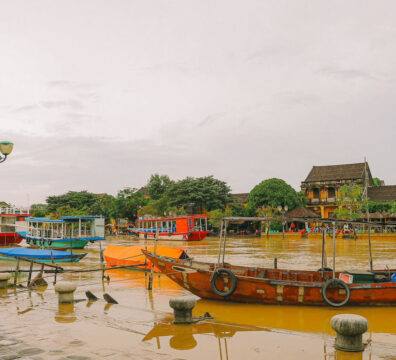
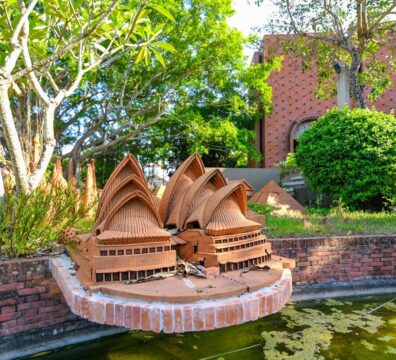



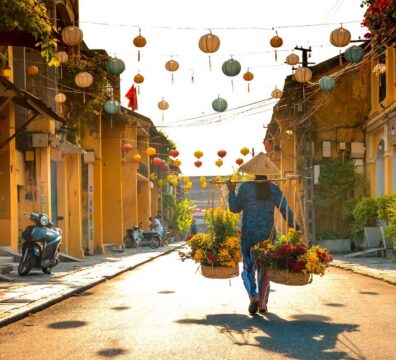


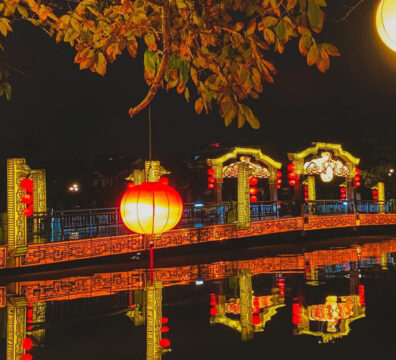
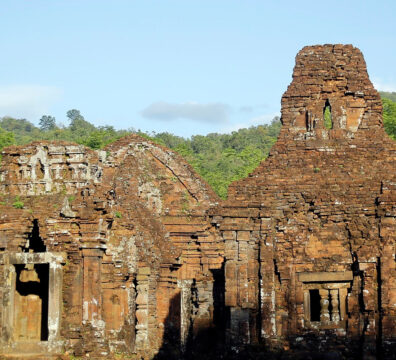


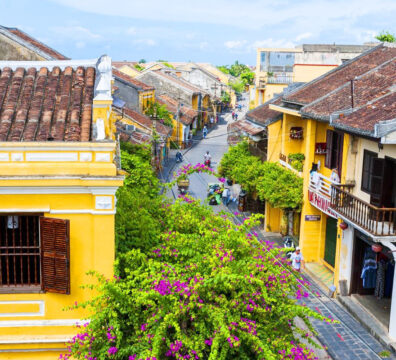







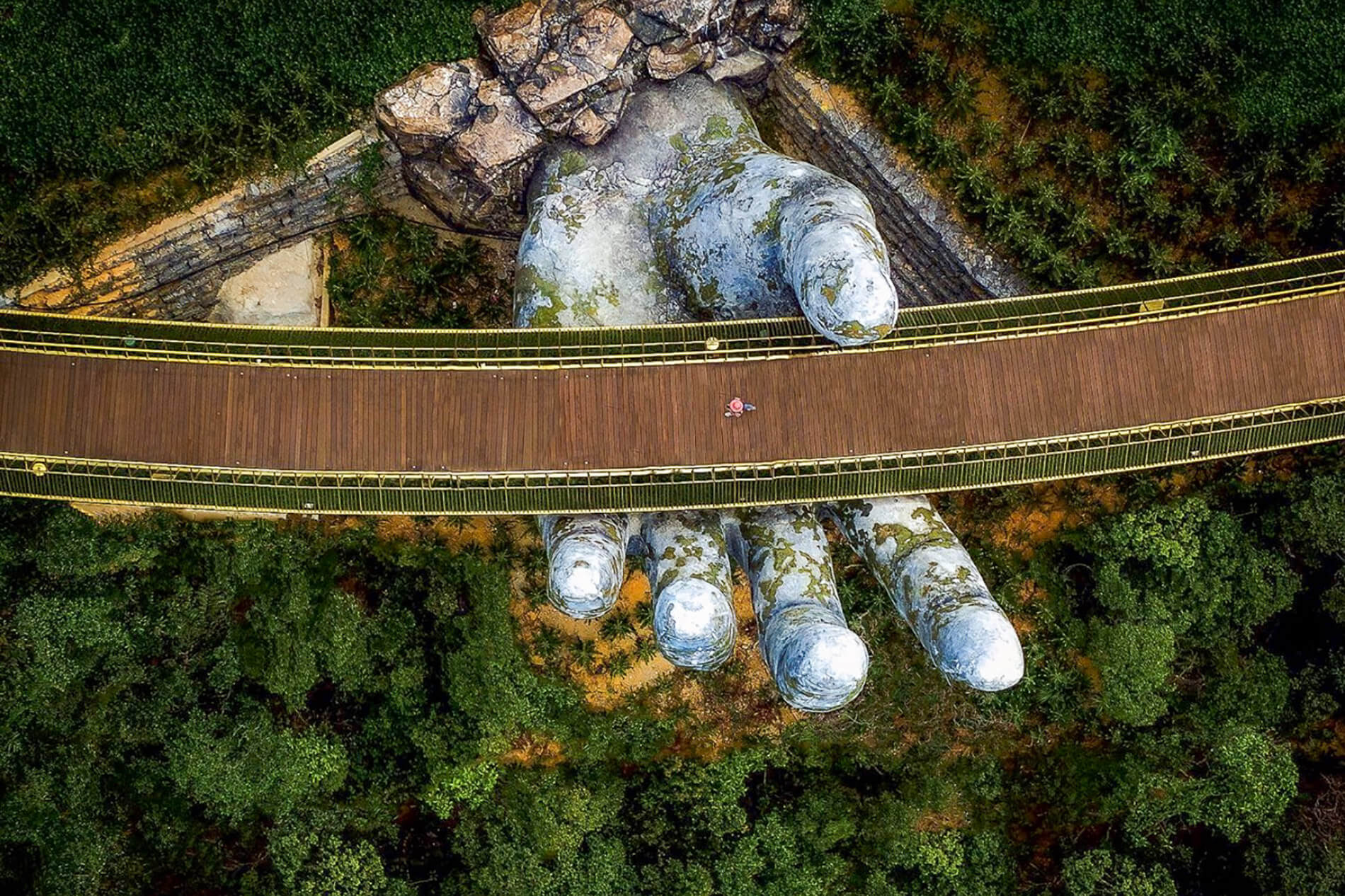











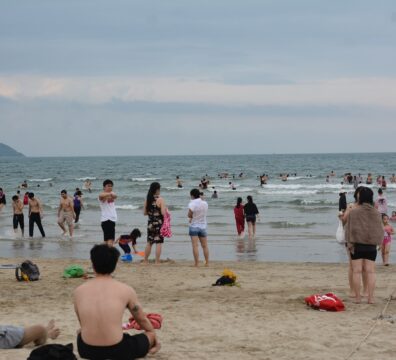

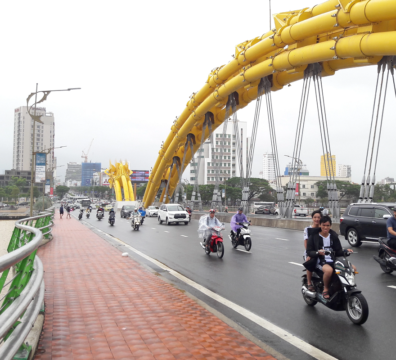









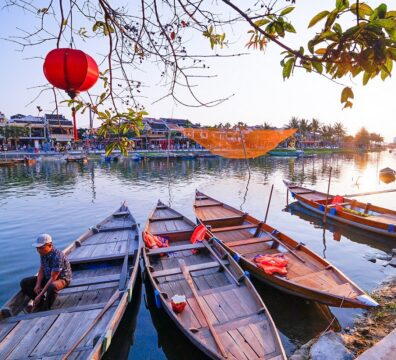


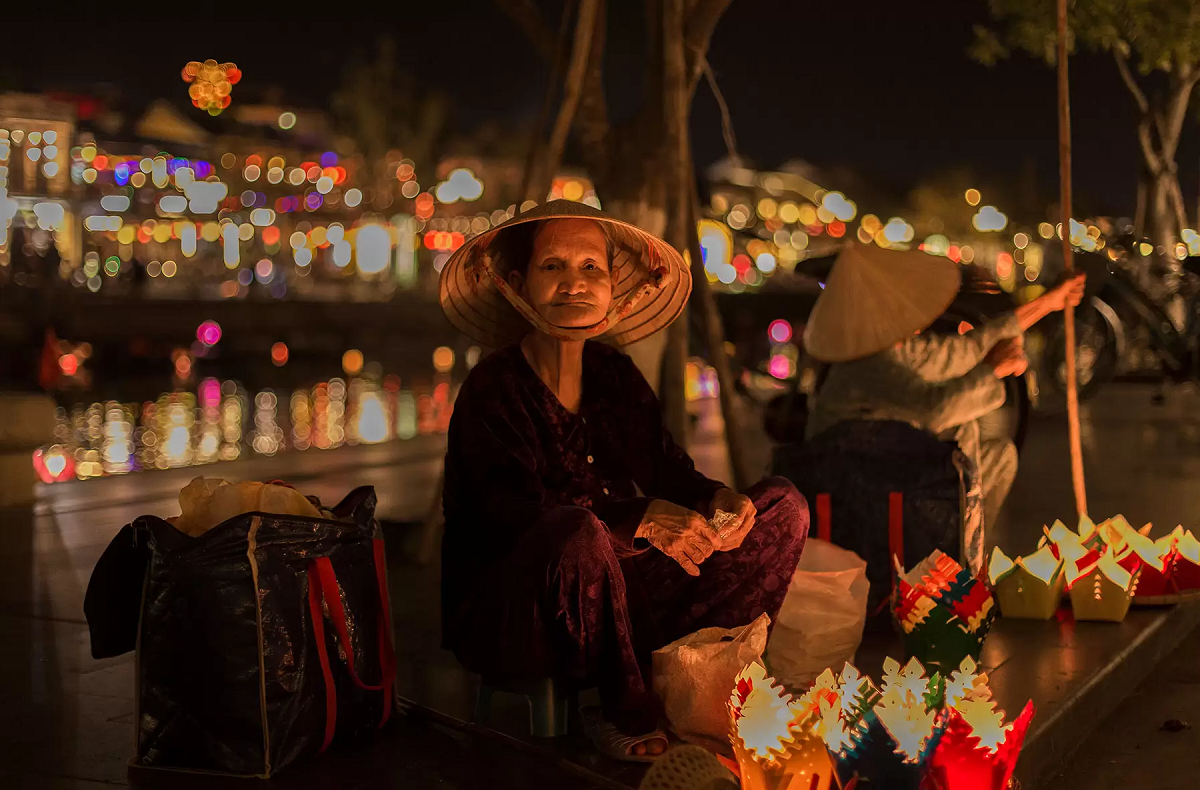







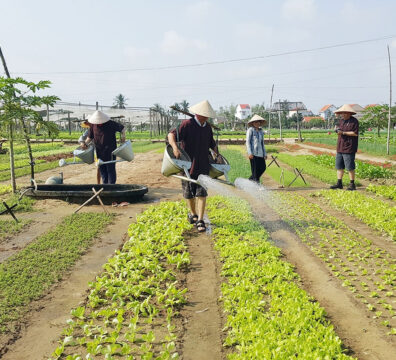
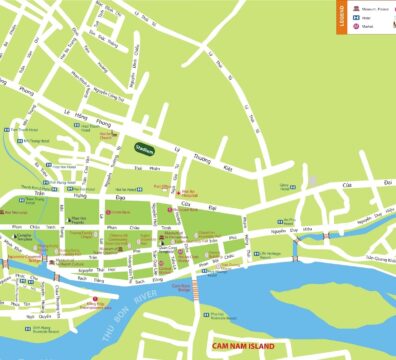

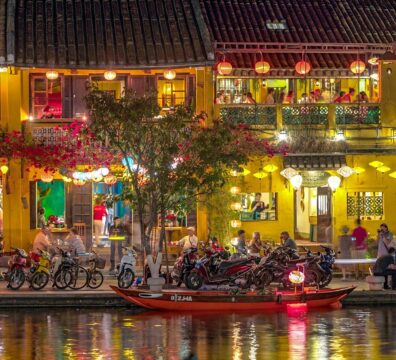
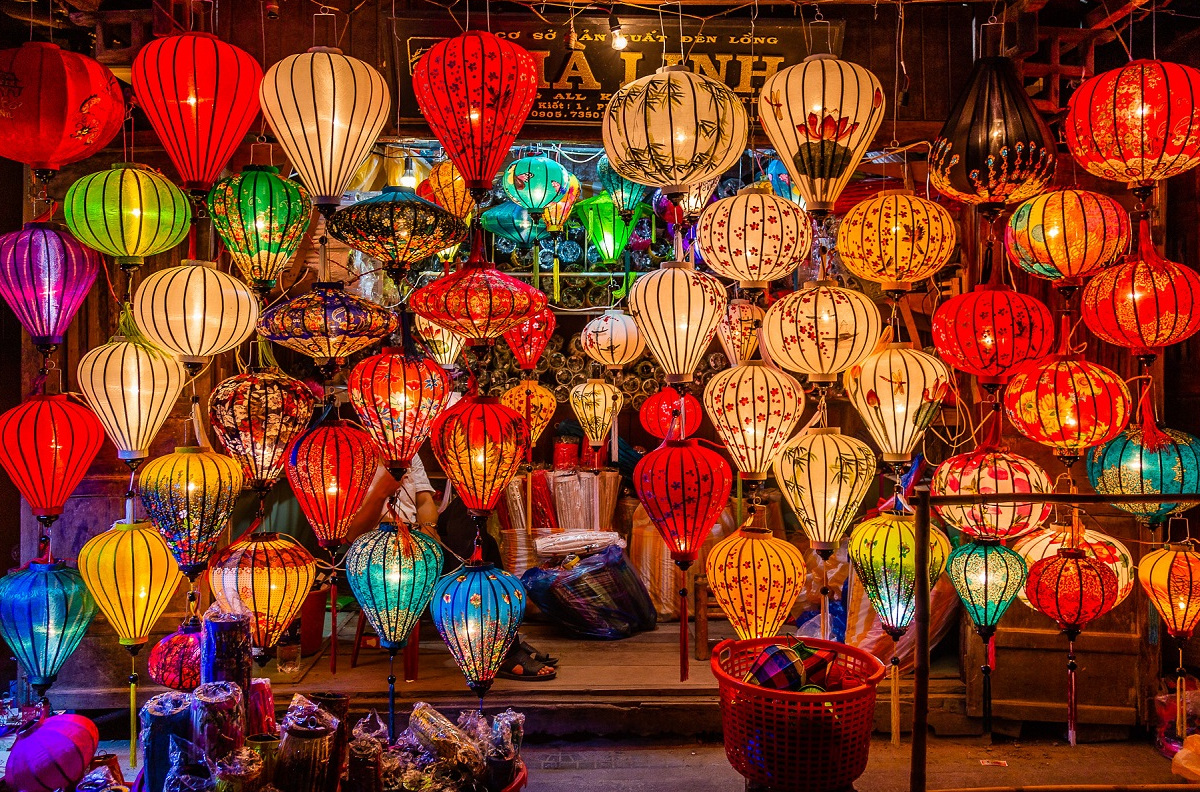




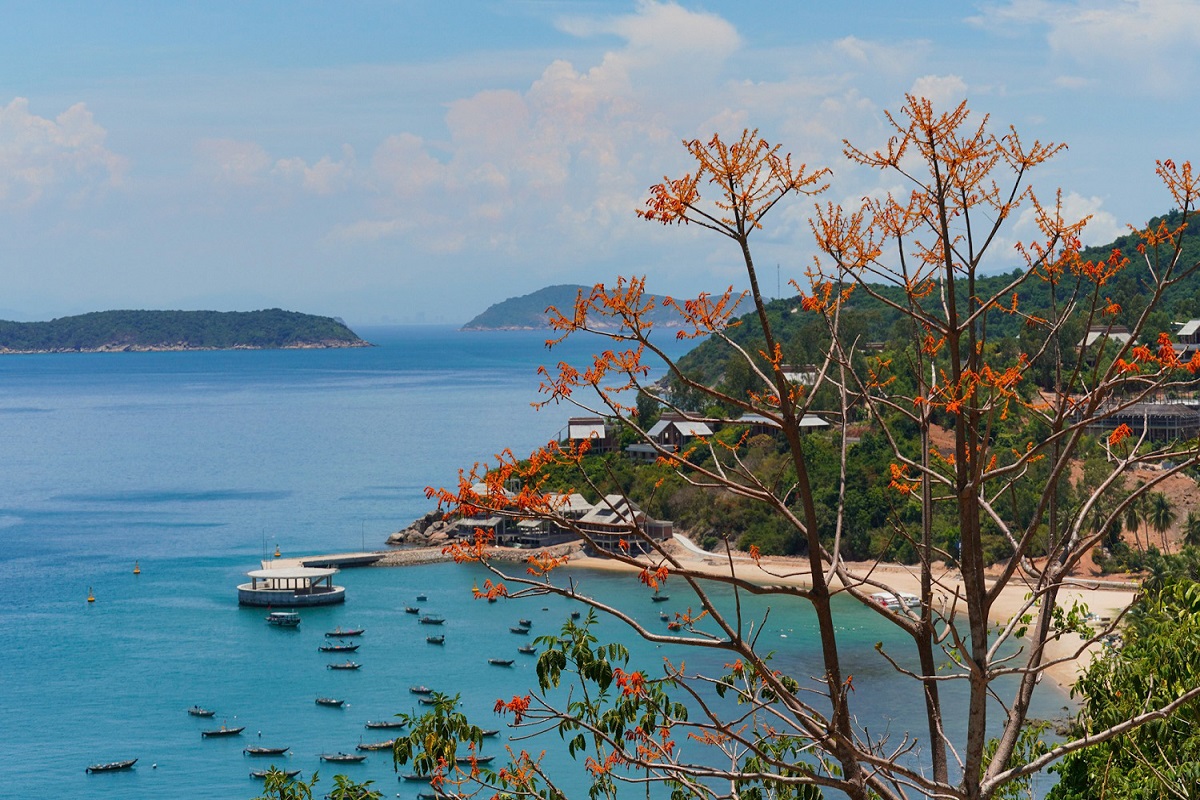








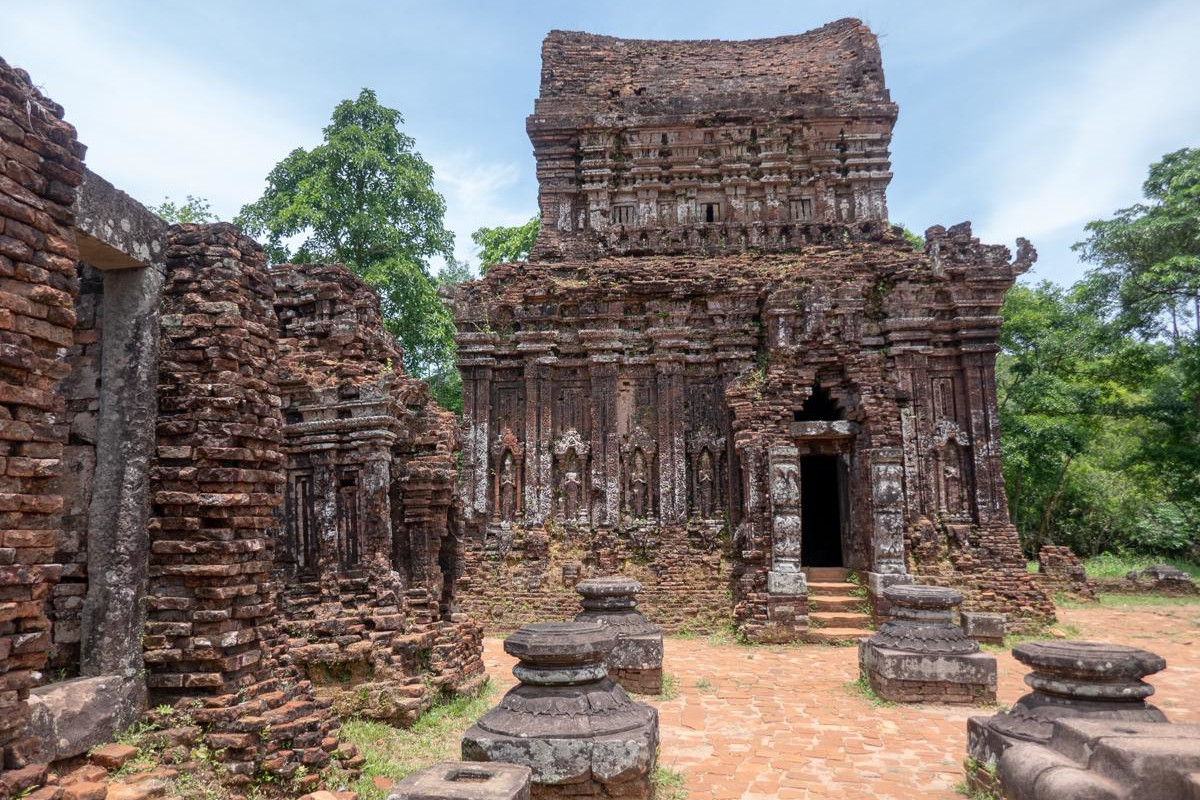

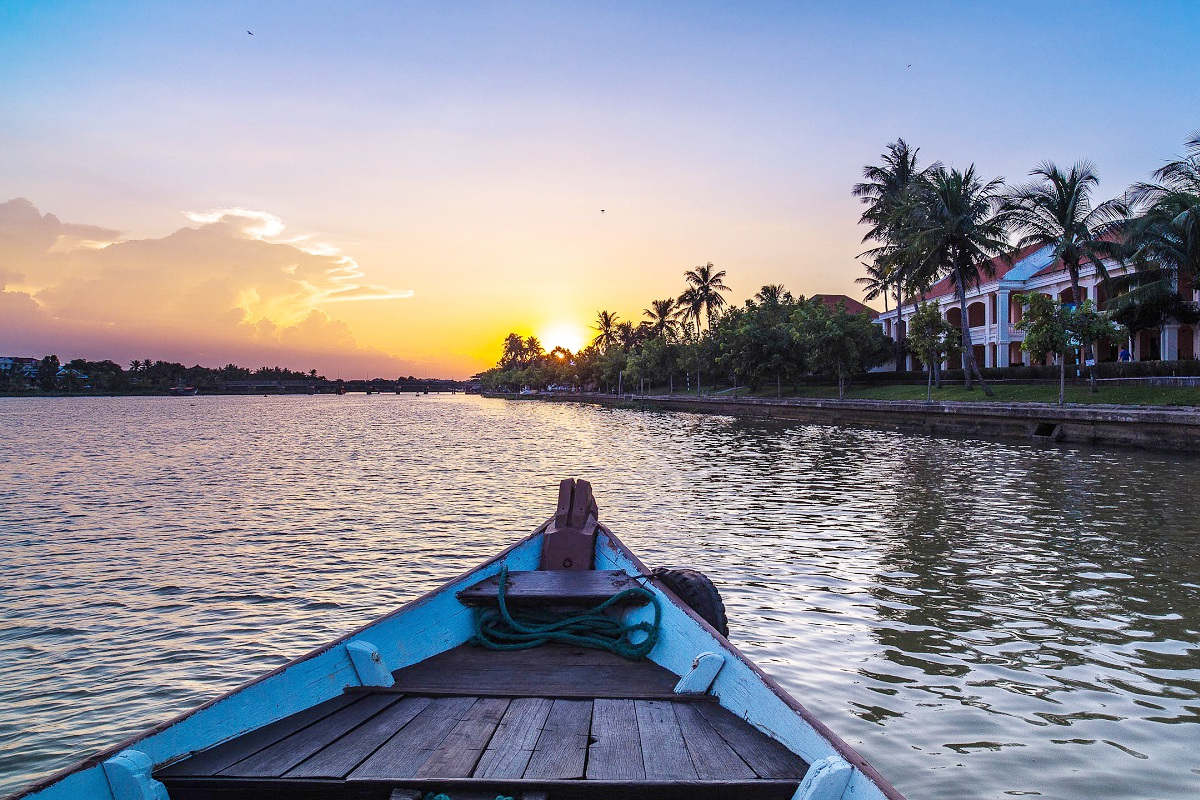





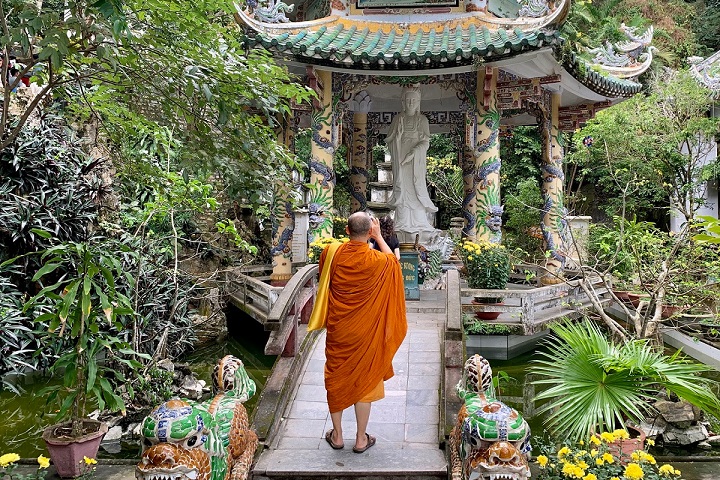


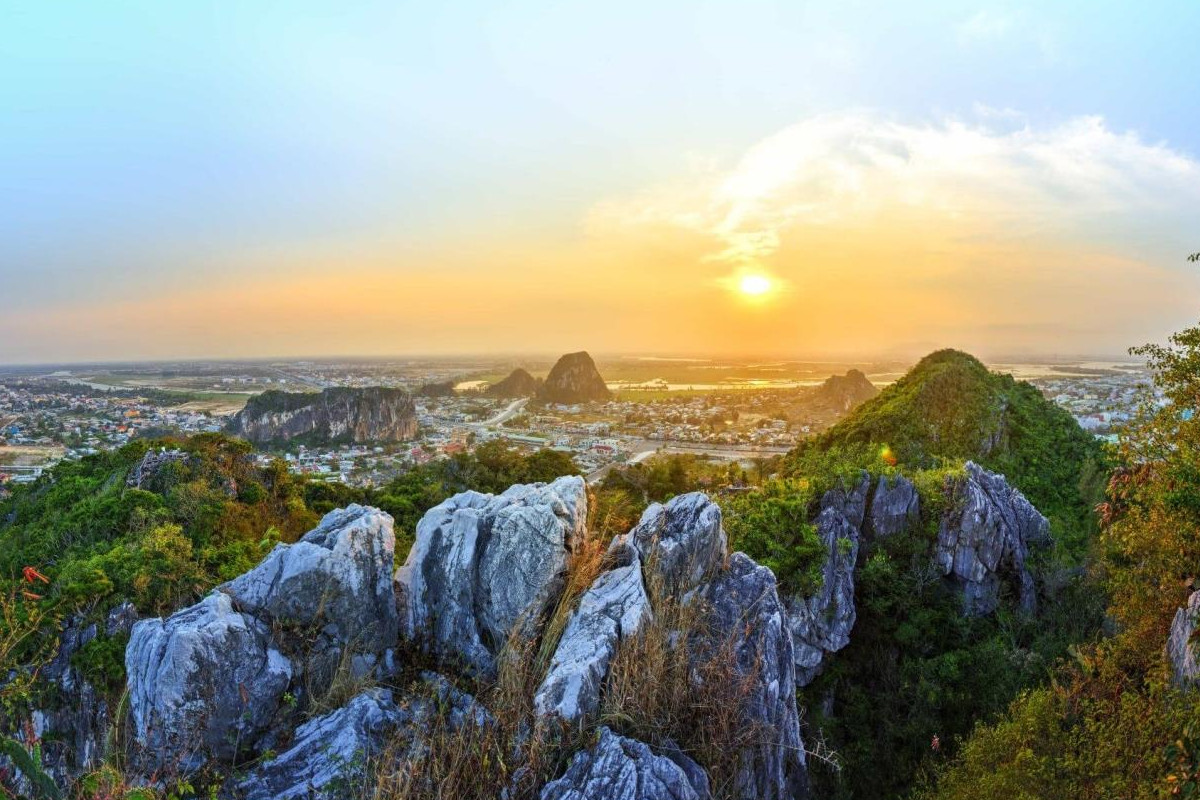
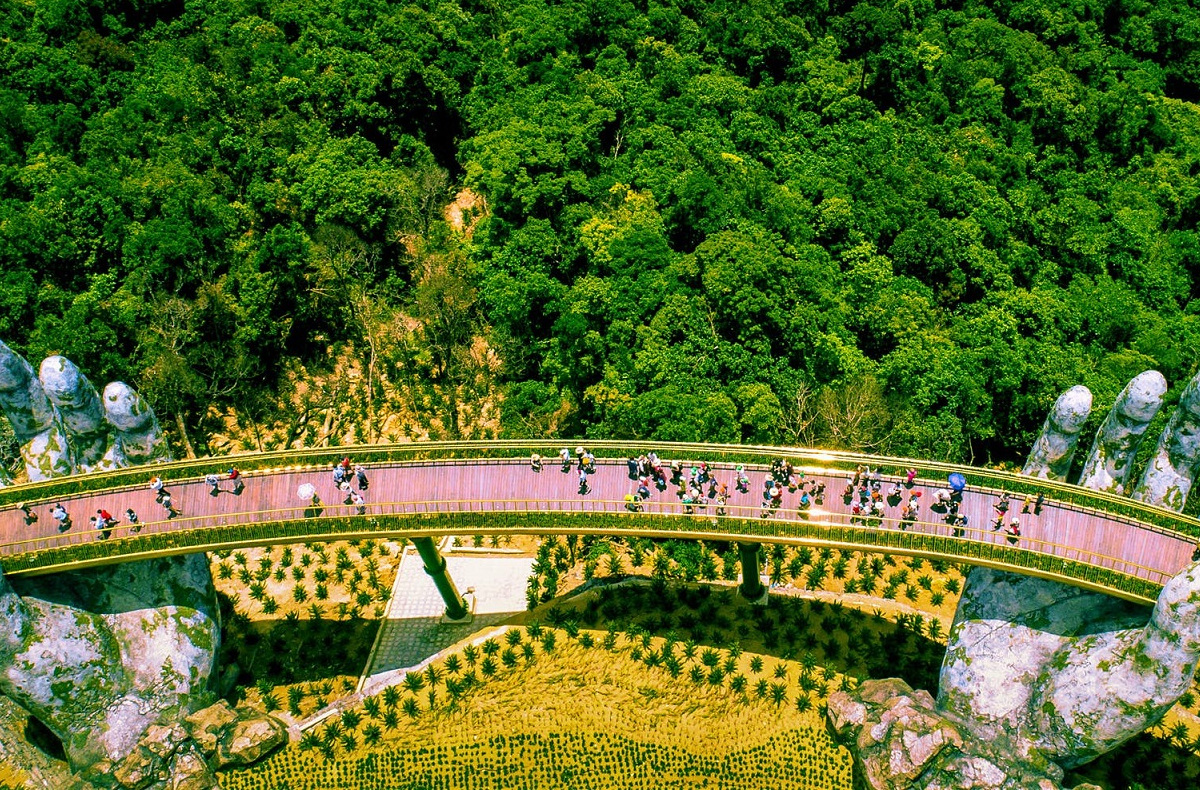














Leave a Reply